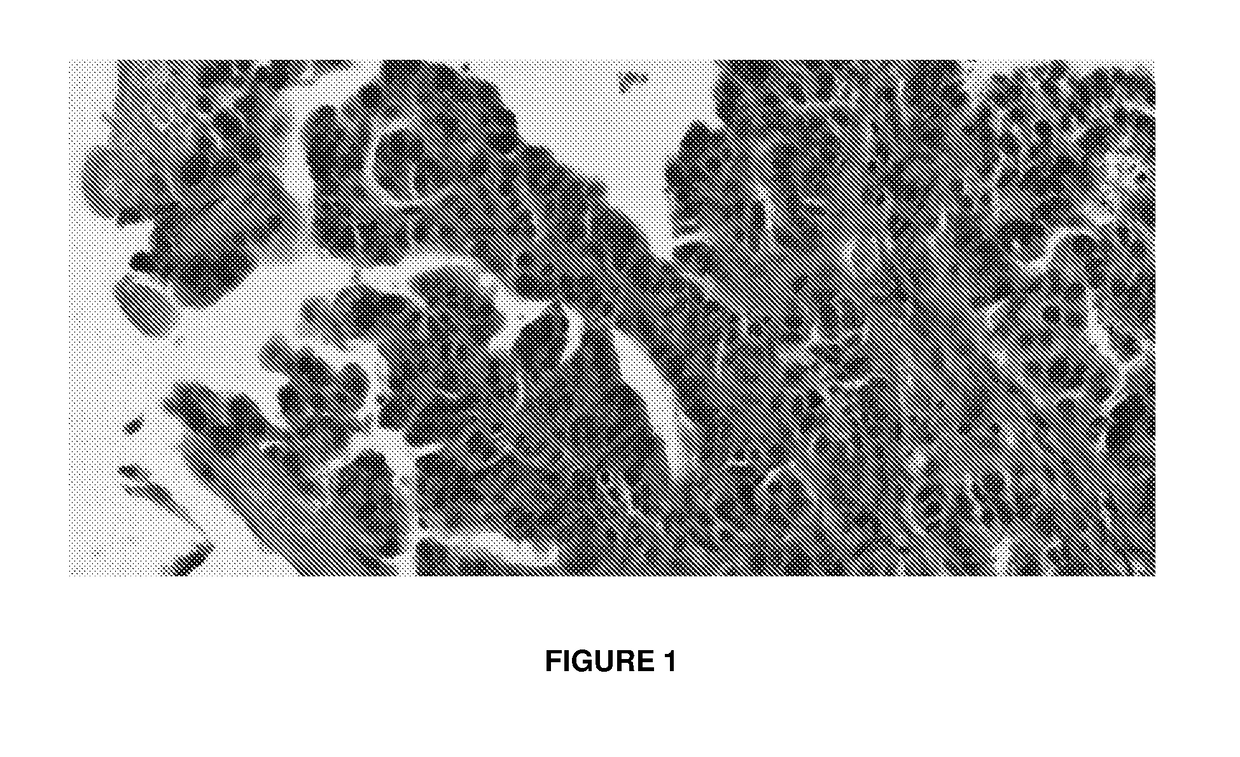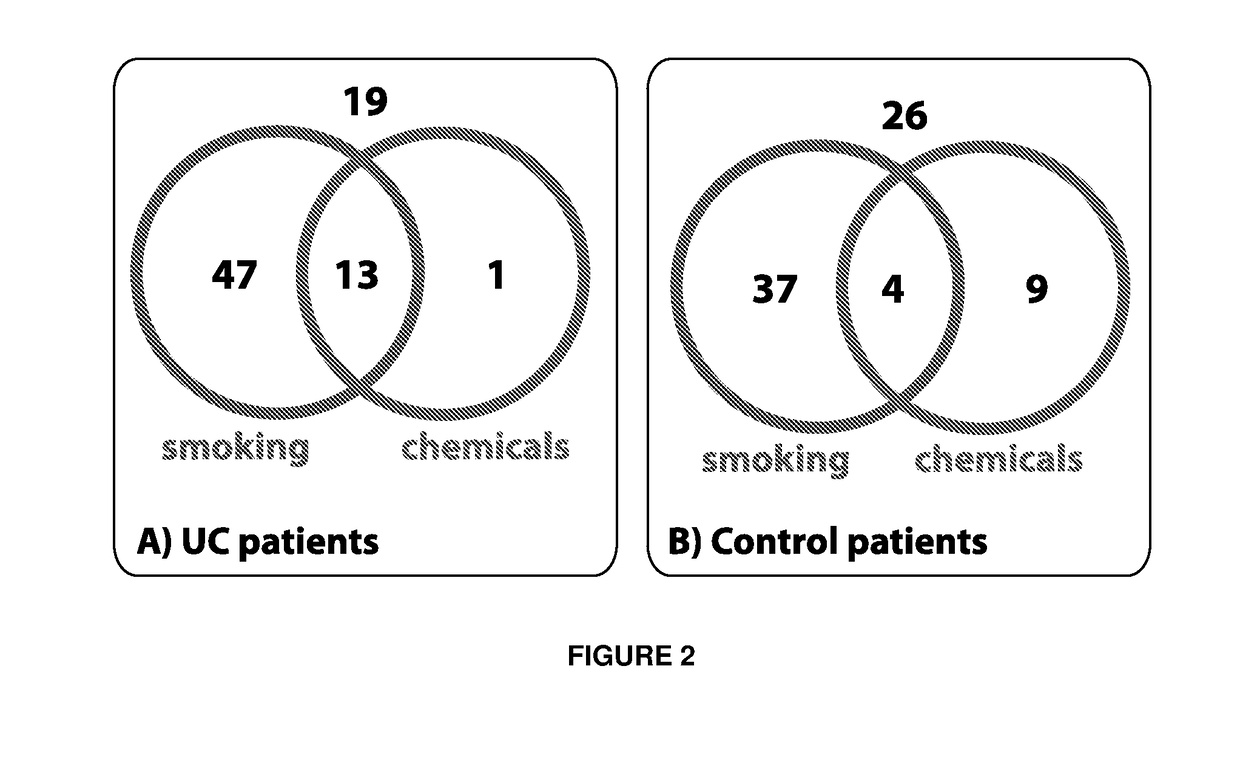Diagnosis of risk of urothelial cancer
a cancer risk and urothelial cancer technology, applied in disease diagnosis, biological material analysis, instruments, etc., can solve the problems of increasing the risk of uc, and leading causes of death worldwide, so as to increase the risk, increase the risk, and increase the risk
- Summary
- Abstract
- Description
- Claims
- Application Information
AI Technical Summary
Benefits of technology
Problems solved by technology
Method used
Image
Examples
example
[0041]The patient database comprised clinical, demographic and biomarker levels (n=29) measured in urine, serum and plasma collected from 156 patients with haematuria recruited to a case-control study, conducted according to Standards for the Reporting of Diagnostic accuracy studies (STARD) guidelines. Biomarker analyses in urine, serum and plasma were carried out as described previously [6].
[0042]The occupational history, exactly as it was recorded for each patient, was reviewed by three authors (MR, CR and KW). Each patient's occupational history was reviewed and classified as low risk (score=1), moderate risk (score=2), or high risk (score=3) as reported previously [6]. The occupational risk score (ORS) categories were then averaged. Occupations, which were deemed as high-risk for developing bladder cancer included categories of painters [7], mechanics [8], metal, textile and electrical workers, miners, transport operators, excavating-machine operators, concierges...
PUM
| Property | Measurement | Unit |
|---|---|---|
| concentration | aaaaa | aaaaa |
| resistance | aaaaa | aaaaa |
| molecular heterogeneity | aaaaa | aaaaa |
Abstract
Description
Claims
Application Information
 Login to View More
Login to View More - R&D
- Intellectual Property
- Life Sciences
- Materials
- Tech Scout
- Unparalleled Data Quality
- Higher Quality Content
- 60% Fewer Hallucinations
Browse by: Latest US Patents, China's latest patents, Technical Efficacy Thesaurus, Application Domain, Technology Topic, Popular Technical Reports.
© 2025 PatSnap. All rights reserved.Legal|Privacy policy|Modern Slavery Act Transparency Statement|Sitemap|About US| Contact US: help@patsnap.com


